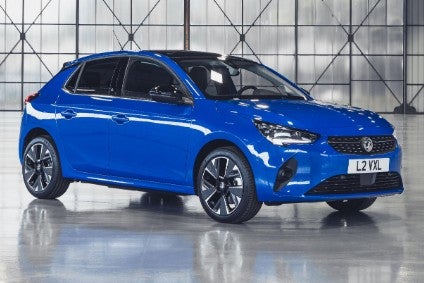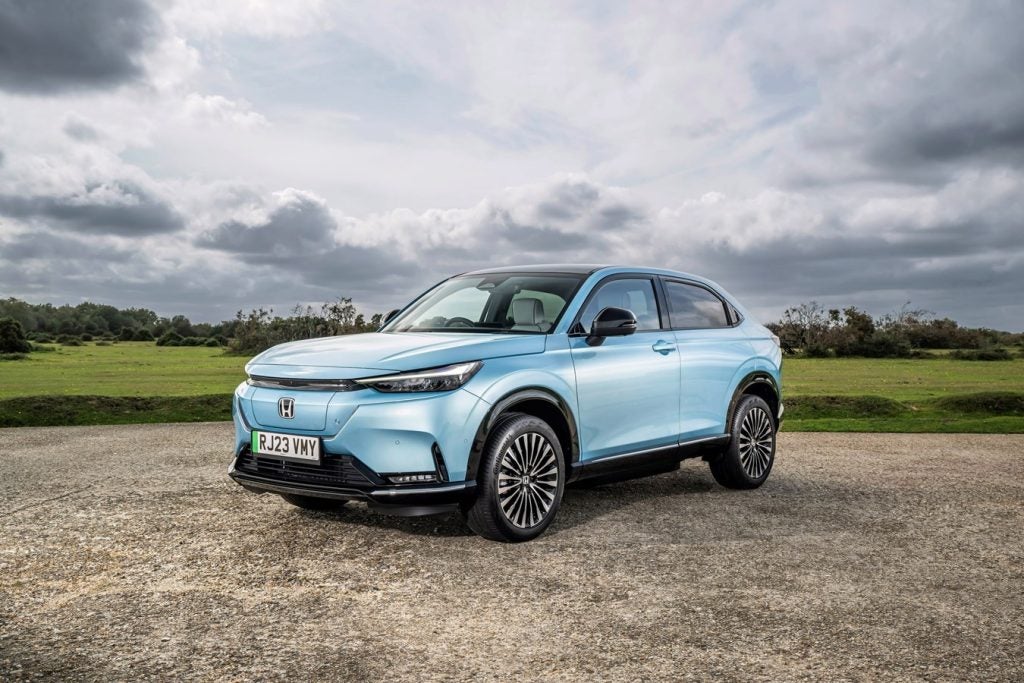
Only smart (-81%) had a worse first three quarters than Opel-Vauxhall in the UK+EFTA+EU (-49%). Reasons include the loss of the Adam and Karl/Viva plus a long hiatus between the end of Mokka 1 and the imminent arrival of Mokka 2. Already though, the brands are staging strong comebacks in the UK and Germany with the new Corsa.
It’s still a slow recovery for Opel and Vauxhall, as last month’s Europe-wide combined sales tally of 55,224 compared to 81,847 (-32.5%) evinces. Even though the Corsa will have thrilled Opel by shooting up to number two in its home market behind the Golf, September was another poor month (-28%) for the brand. The Astra (27th) and Crossland X (46th) were the only other cars with a blitz on their grilles to land inside Germany’s top 50. Meanwhile, 1,080 examples of the Grandland X were registered last month versus 4,135 units of the segment-leading Tiguan.
Waiting for a much needed new Mokka
While Opel didn’t have too good a month in Spain (-48%), France (-32%) or Italy (-42%) either, things could be about to get much better. There should be a significant improvement, nicely timed to coincide with the start of the new decade, with Mokka build commencing in November, followed a few weeks later by the arrival of a facelifted Crossland.
Let’s forget the big three continental European countries plus Spain and concentrate instead on Vauxhall. Even though 328,041 cars registered last month made the British market the largest in Europe – it’s the same every September – this was the the lowest volume since 1999. The Griffin badge brand suffered a 28% year-on-year decline to 19,614 passenger vehicles. Still, that’s an encouraging comeback compared to the brand’s 47.5% drop year to date (market: -33.2% YtD and -4.4% in September).
Corsa closing in on Fiesta
How well do you really know your competitors?
Access the most comprehensive Company Profiles on the market, powered by GlobalData. Save hours of research. Gain competitive edge.

Thank you!
Your download email will arrive shortly
Not ready to buy yet? Download a free sample
We are confident about the unique quality of our Company Profiles. However, we want you to make the most beneficial decision for your business, so we offer a free sample that you can download by submitting the below form
By GlobalDataAt the end of the first three quarters, Vauxhall, in seventh position (72,036), is well ahead of eighth place Kia (57,155) and behind Toyota (73,067), Audi (80,435), BMW (84,611), Mercedes (84,693), Volkswagen (110,668) and Ford (117,783). Worth noting as an aside: the single Japanese marque in the top ten is also the only brand not to have suffered a 20-, 30- or 40-something percent decline, its fall being 15.9%.
Nine-month Corsa registrations number 35,535 versus 39,436 Fiestas, and the 800-cars lead that the Vauxhall took in September will have alarmed Britain’s number one brand. Why Ford of Europe is taking so long to bring out a facelift is anyone’s guess but a serious mistake however it’s being explained away – the eighth generation model has been around since mid-2017.
A right-hand drive vehicle is the best selling model of the entire Opel-Vauxhall line-up.
Number one in Germany
If the little Vauxhall becomes not only the new segment number one but also the brand which dethrones Britain’s decades-long best seller, underestimating the threat of a new Corsa will have been a terrible oversight by FoE and FoB. That already applies in Germany where the little Opel (33,546) has moved to the top of the small car class (Polo: 32,203; Fiesta: 25,248). Notice too that an RHD vehicle is the best selling model of the entire Opel-Vauxhall line-up. To their credit, Carlos Tavares and Michael Lohscheller do at least remember to name-check the British brand now and then, a contrast to near-invisibility during the GM ownership decades.
So what’s behind the rise of this car? I’ve just had a Corsa 1.2-litre petrol automatic for a week and can easily see the appeal, even though I also remain a big fan of the Ford and VW. Everyone I asked agreed that the new shape is attractive, and that it looks bigger. Length has gone up to 4,060 mm compared to 4,021 mm for the old model. And there’s another difference, there being no successor for the three-door, something that’s becoming the norm in the European and indeed global B segment.
Petrol, diesel, EV – no MH or PHEV
There are quite a few engine choices and in contrast to the Fiesta, there’s a good spread of outputs plus the suddenly big advantage of an imminent electric option (Corsa-e). The base powertrain is a 55 kW (75 PS) 1.2-litre three-cylinder petrol. This, the only Corsa which isn’t turbocharged, has a five-speed manual gearbox so economy, while good, isn’t class leading.
The other two options for those who want a petrol engine are 74 kW (100 PS) and 205 Nm versions of a 1.2-litre three-cylinder turbo or a 96 kW (130 PS) and 230 Nm alternative. The first of these has a six-speed manual transmission with an eight-speed automatic optional. The self-shifter is standard for the more powerful of the pair. And as for the diesel, it’s a 75 kW (101 PS) and 250 Nm 1.5-litre four-cylinder with no automatic availability.
Opel and Vauxhall claim significant weight savings for the latest model, the lightest version tipping the scales at 980 kg (the fully equipped test example added 110 kg to that). Some of the features which help lower weight include an aluminium bonnet and a body-in-white which lost 40 kg compared to the previous five-door, as well as seats which are a combined 10kg lighter.
Gamma replaced by CMP
As the platform is also new for this model – Groupe PSA’s CMP – there was significant spending at the Figuerelas (Zaragoza) factory ahead of the start of production. The Spanish plant also builds the Crossland which uses a General Motors legacy architecture although it has PSA engines now, certain of which aren’t found in the Corsa (110 PS and 120 PS diesels and an 83 PS non-turbo petrol). Expect this small crossover to switch to CMP and e-CMP when the time comes for replacement, which should be 2023.
I haven’t tried the diesel Corsa (it’s a terrific engine in the 208) and perhaps, given that there’s no automatic transmission, the 100 PS and 205 Nm petrol is a decent albeit inferior alternative in terms of economy and torque. The Aisin automatic gearbox behaved faultlessly, with none of the annoying low-speed shunting and hesitation which can impair the six or seven-ratio DCTs which some other B segment models offer.
Torque converter beats dual clutches
Having eight ratios does wonders for both a feeling of sophistication and fuel consumption. Some might wish for less in the way of vibration when the stop-start system fires and shuts down the engine but it’s never intrusive. Anyway, you can turn it off. Joyously, that also applies to LKA, which then stays off. This is interesting as the Corsa has the same long-press-needed ignition button and other controls as the 208 but in the Peugeot if you don’t like Interfering Steering, it must be switched off every time the car is started.
The Corsa is now one of the class leaders for all manner of reasons.
Perhaps we will see easily deactivated steering tugging systems more often as I know I am not the only person who strongly dislikes them. The VW ID.3’s needs four presses on a touch screen to deactivate it then resets to ON every time the engine is stopped. That would put me off buying or recommending that model; a real shame as it’s such a good car in most other ways. Volkswagen counters that it’s to do with legislation but that’s not the case: BMWs as well as the Corsa and quite a few other cars prove that.
The lack of excess weight makes for fun driving in the little Vauxhall, and while you’ve a choice of Eco, Normal and Sport gearbox modes, most of us would likely choose a preferred setting and leave it there. Having tried them all, Eco is a good default as you still get 45+ mpg fuel economy as the good torque output means the engine doesn’t need to be revved too hard.
Dynamics & dashboards
If you’ve tried and enjoyed some time driving a Fiesta the appeal of that car’s sharp steering and firmer springing will be familiar. The Ford’s interior could do with a bit of an update though, and it also lacks the great little steering wheel of the Peugeot 208 as well as the distinctive dashboard.
The Renault Clio also has much to offer for those who love a touchscreen instead of buttons and dials. Like the Polo, the Corsa falls somewhere in between and manages to pull off a genuine high quality German brand look too. There’s lots of space, including a 309-litre boot (1,118 with flipped seats) and soft materials abound – bear in mind though that the test car was in high-spec trim. Nonetheless, the Corsa is now one of the class leaders for all manner of reasons.
Conclusion
This ever more popular B segment hatchback points the way to where Opel and Vauxhall are headed, which is firmly back in favour with car buyers. Looking at the pipeline of facelifts and new models, as long as Stellantis manages the German and British brands as well as PSA has been doing, next year could be a very good one for both.
The Vauxhall Corsa 100 PS 1.2-litre petrol automatic costs GBP22,785 in Elite Nav Premium trim. Combined fuel consumption is 45.6mpg to 48.7mpg according to WLTP, and CO2 is 99g/km. Top speed is 119 mph and 0-62 mph takes a quoted 10.2 seconds.







